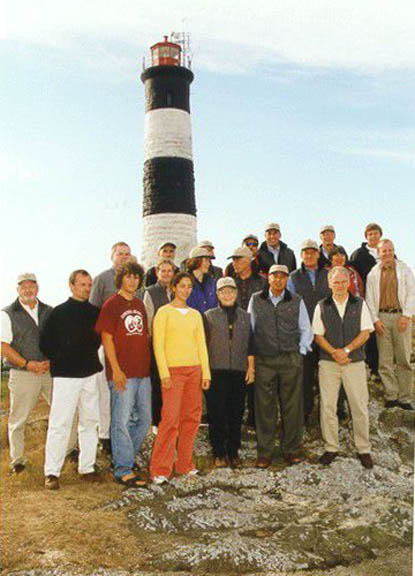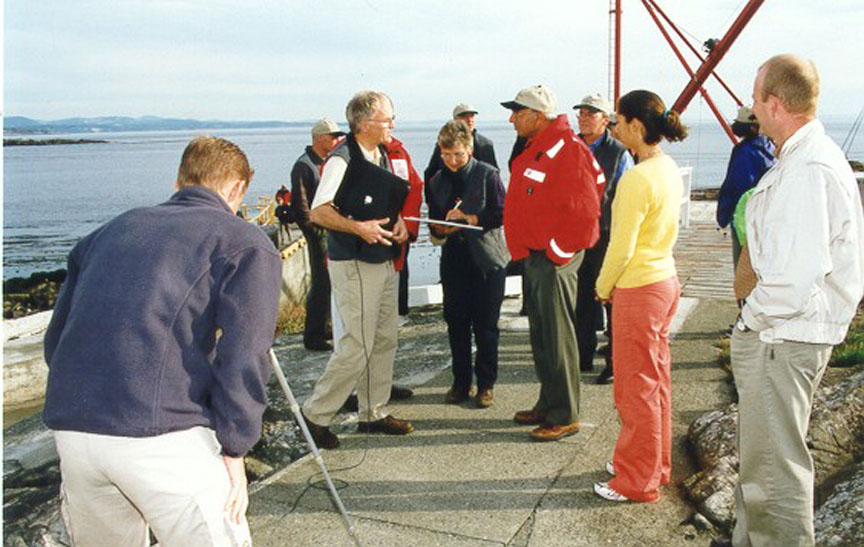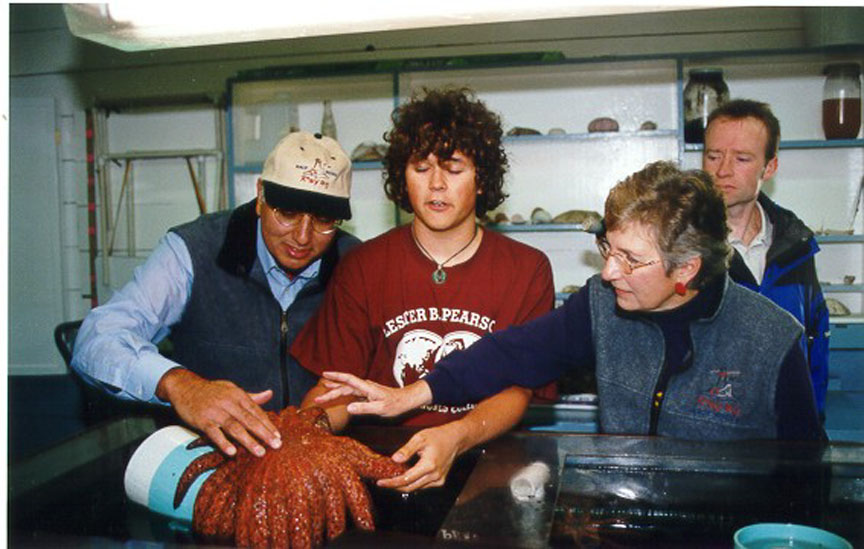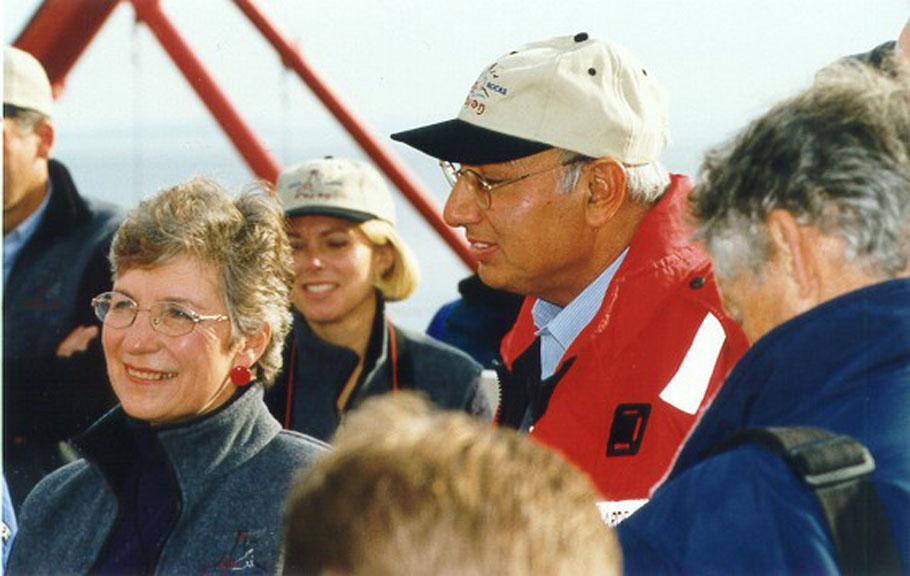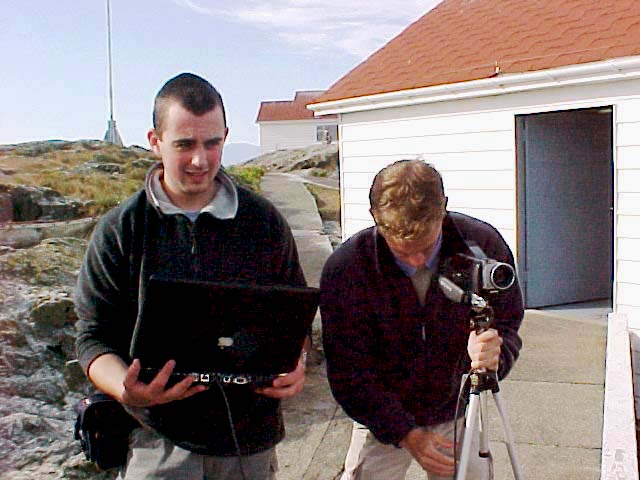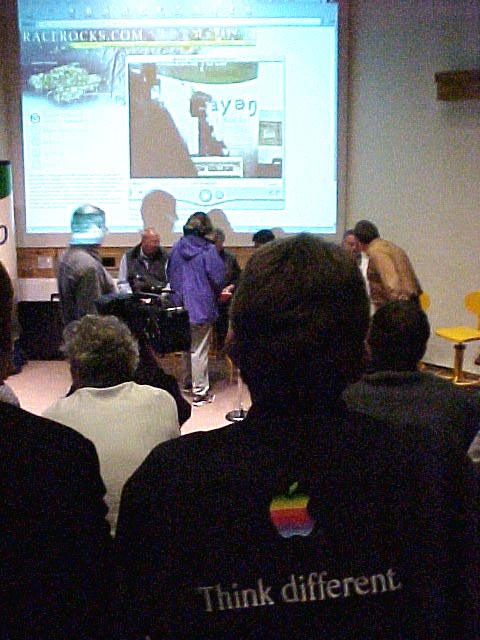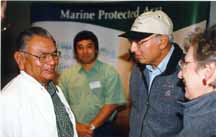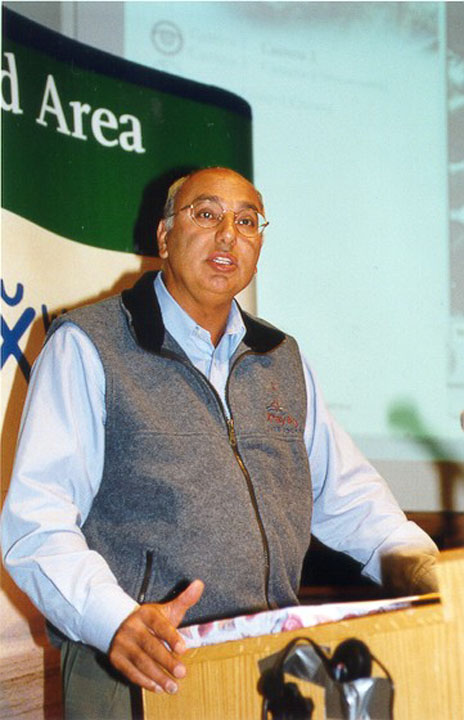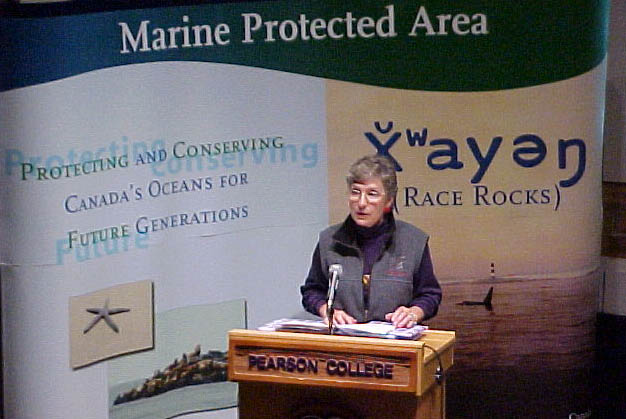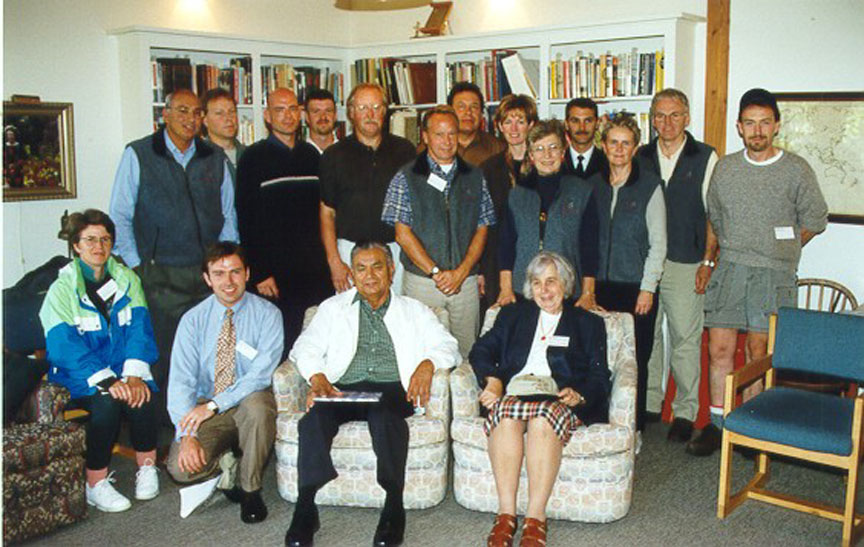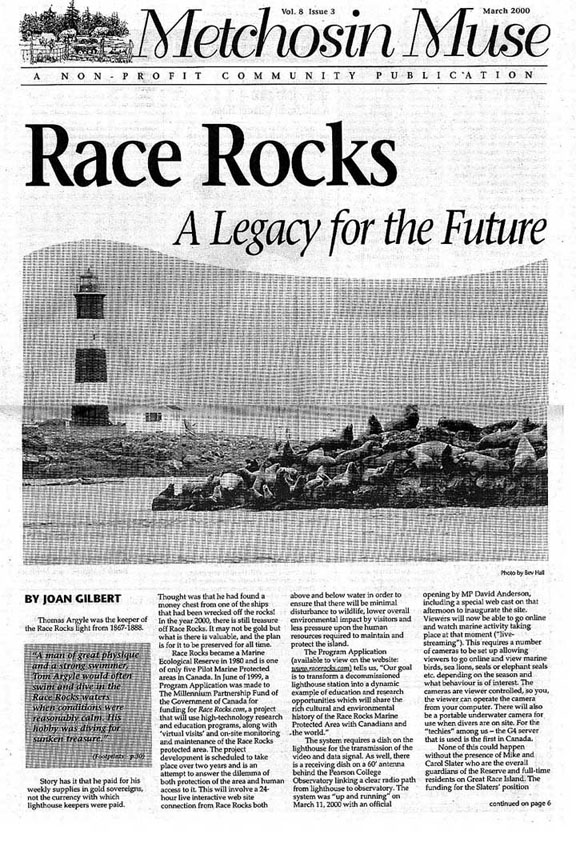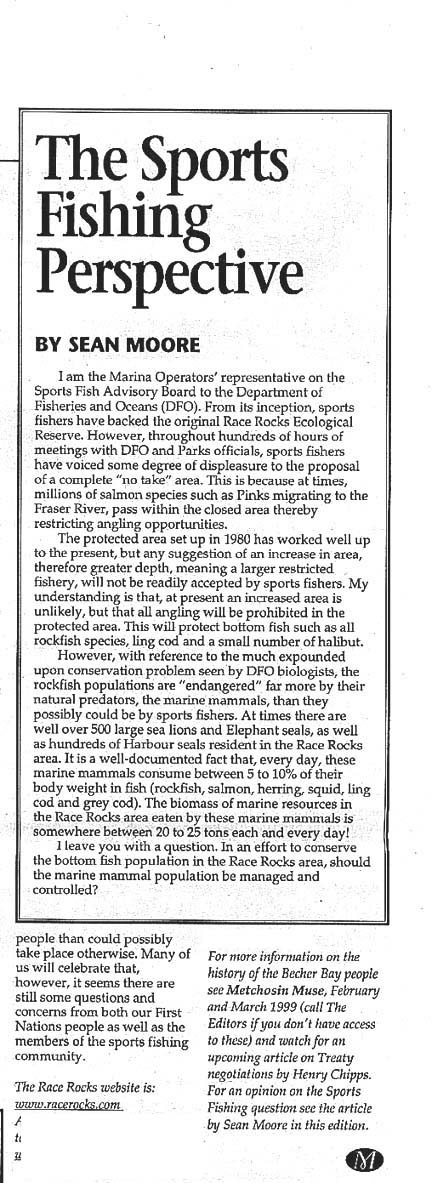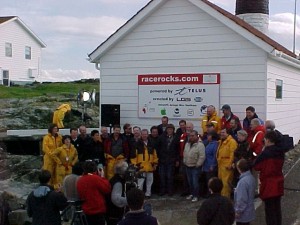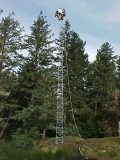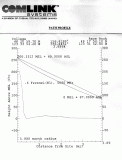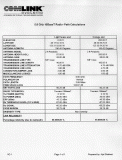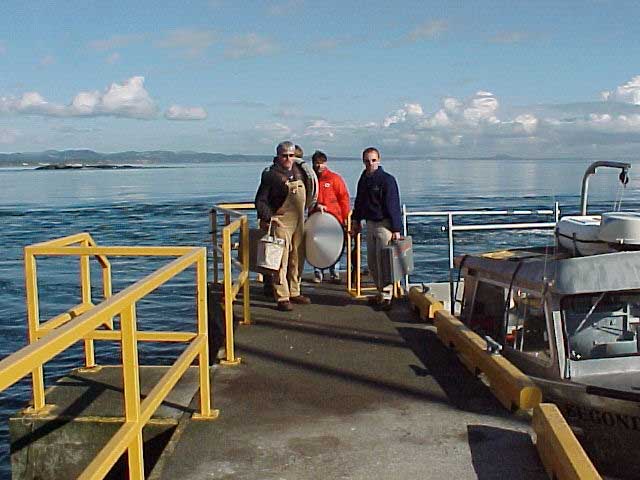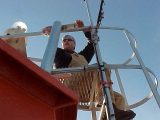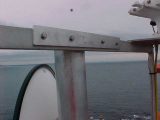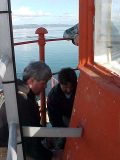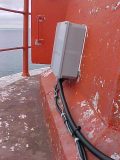XwaYeN (Race Rocks) Marine Protected Area
Regulations
Statutory Authority
Oceans Act
Sponsoring Department
Department of Fisheries and OceansREGULATORY IMPACT
ANALYSIS STATEMENT
DescriptionThe Oceans Act (the Act) came into force on January 31, 1997. Part II of the Act authorizes the establishment of an Oceans Man-agement Strategy (OMS) based on the principles of sustainable development, integrated management and the precautionary ap-proach. This part of the Act also provides authority for the devel-opment of tools necessary to carry out the OMS, tools such as the establishment of Marine Protected Areas. Section 35 of the Act authorizes the Governor in Council to designate, by regulation, Marine Protected Areas for any of
the following reasons: (a) the conservation and protection of commercial and non-commercial fishery resources, including marine mammals and their habitats;
(b) the conservation and protection of endangered or threatened species and their habitats;
(c) the conservation and protection of unique habitats;
(d) the conservation and protection of marine areas of high biodiversity or biological productivity; and
(e) the conservation and protection of any other marine re-source or habitat as is necessary to fulfill the mandate of the Minister of Fisheries and Oceans.
In 1998, the Minister of Fisheries and Oceans announced four pilot Marine Protected Area initiatives on Canada’s Pacific Coast. One of these, Race Rocks in British Columbia, meets the criteria set out in paragraphs 35(1)(b), (d)and(e) above. This regulatory initiative proposes to formally designate, under the Oceans Act, the waters surrounding Race Rocks as XwaYeN (Race Rocks) Marine Protected Area (MPA). In addition, the harvesting of liv-ing marine resources within the MPA will be prohibited subject to existing aboriginal or treaty rights. XwaYeN (pronounced shwai’yen) is located in the Juan de Fuca Strait, 17 kilometres off the coast of Vancouver Island,southwest of Victoria. The islets of XwaYeN (Race Rocks) form the most southerly part of Canada’s Pacific Coast. Named for its strong tidal currents and rocky reefs, the waters surrounding XwaYeN (Race Rocks) are a showcase for Pacific marine life, featuring whales, sea lions, seals, birds and a wide variety of underwater plants and animals. These waters are home to a thriving community of sub-tidal invertebrates, includ-ing sponges, anemones, hydroids and soft corals. Crowds of barnacles, tunicates, urchins and sea stars adorn the underwater cliffs. Fish such as sculpin, rockfish and lingcod seek refuge in the rocky crevices and undulating kelp forests.
The area’s high velocity tidal currents — up to seven knots — in combination with the climate and the temperature and salinity of the water in the area supplies a generous stream of nutrients and promotes high levels of dissolved oxygen. These factors con-tribute to the creation of an ecosystem of high biodiversity and biological productivity.
The waters surrounding XwaYeN (Race Rocks) are an impor-tant nursery and recruitment area for Northern abalone. In 1999, Northern abalone (Halliotis kamischatkana)wasdesignated as a threatened marine species by the Committee on the Status of En-dangered Wildlife in Canada (COSEWIC). Protecting this nursery and recruitment area will aid the nurturing of this species. Fur-thermore, efforts to conserve and protect the biodiversity and biological productivity of the XwaYeN (Race Rocks) marine ecosystem will also enhance the protection of this threatened species.
To provide long-term and comprehensive protection of the di-verse
species and to maintain the biological productivity of the
ecosystem, a prohibition of the harvesting of all living marine
resources in the waters surrounding XwaYeN (Race Rocks) is
being proposed. Although seasonal fisheries closures under the Fisheries Act have restricted all commercial fishing of finfish and shellfish in the area since 1990, recreational harvesting of salmon and halibut and harvesting of non-commercial species continues.
The prohibition of living marine resource harvesting under the Oceans Act will provide a longer-term commitment to the conser-vation and protection of the XwaYeN (Race Rocks) ecosystem. In 1980, the province of British Columbia, under the authority of the provincial Ecological Reserves Act, established the Race Rocks Ecological Reserve, which provides for the protection of the terrestrial natural and cultural heritage values (nine islets) and of the ocean seabed (to the 20 fathoms contour line). Ocean dumping, dredging and the extraction of non-renewable resources are not permitted within the boundaries of the Ecological Reserve.
However, the Ecological Reserve cannot provide for the con servation and protection of the water column or for the living resources inhabiting the coastal waters surrounding XwaYeN (Race Rocks). The federal government is using its authority to complement the protection afforded by the Ecological Reserve by prohibiting the harvesting of living marine resources. Adopting an integrated management approach within the Race Rocks area will provide for a more comprehensive level of con-servation and protection for the ecosystem than can be achieved by either an MPA or an Ecological Reserve on its own. Desig-nating a Marine Protected Area within the area corresponding to the Ecological Reserve will facilitate the integration and increase the synergy of conservation, protection and management initia-tives under the respective authorities of the two governments.
The Oceans Act mandates the Minister to lead and facilitate the
development and implementation of plans for the integrated man-agement of all activities with other ministers and agencies of the Government of Canada, with provincial governments and with affected Aboriginal organizations and coastal communities for the purposes of conservation and protection of Canada’s oceans.
This proposal to designate the XwaYeN (Race Rocks) area as a Marine Protected Area under the Oceans Act provides the neces-sary foundation for the Minister to lead and facilitate the devel-opmentof an integrated, cooperative ecosystem-based manage-ment regime utilizing:
(a)acooperative, integrated management approach involving several federal and provincial government agencies using their
respective authorities to conserve and protect the area;
(b) compliance based on best practices, stewardship and vol-untary guidelines; and
(c) assessment of effectiveness of the voluntary initiatives and further restriction as warranted. Integrating the management of the terrestrial and marine com-ponents of the XwaYeN (Race Rocks) ecosystem will facilitate coordinated, effective and efficient management of the area. This cooperative management regime is the preferred approach to the conservation and protection of XwaYeN (Race Rocks) as deter mined through the consultation process. Candidate activities for cooperative management include marine mammal watching, guided diving, research and education, ballast water management, National Defence and Transport Canada programs in the area.
The designation of the XwaYeN (Race Rocks) as an MPA and the prohibition of harvesting of living marine resources are an important and necessary element in the overall conservation and protection of an ecosystem which is biologically diverse and highly productive.
Alternatives The status quo was considered unacceptable because even though the area is currently afforded some protection under the Fisheries Act, an MPA designated by regulation under the Oceans Act provides an opportunity to use integrated management tools for conserving and protecting the biodiversity and biological pro-ductivity of the area and the threatened Northern abalone.
The proposed option is the designation of the XwaYeN (Race
Rocks) MPA by regulation with a prohibition on the harvesting of all living marine resources. This option will provide the primary element required to manage the MPA while allowing the Minister to lead and facilitate the development of an integrated manage-ment approach to comprehensive ecosystem management of the area.
This alternative to comprehensive regulation conforms to Regulatory Policy by limiting regulatory burden on Canadians. However, should it become necessary, control of activities in the area by regulation would be considered.
Benefits and Costs The primary benefit of the proposed Regulations establishing the XwaYeN (Race Rocks) Marine Protected Area is that the foundation will be set for ensuring the conservation and protec-tion of a highly diverse and productive ecosystem of Canada’s oceans. It will aid in the prevention of potential ecological dete-rioration and protect the Northern abalone in that area. A subsidiary benefit of designating the XwaYeN (Race Rocks) MPA is the opportunity to initiate an integrated management regime based on a cooperative, integrated, ecosystem-based management approach to conserve and protect the area involving several federal and provincial government agencies using their respective authorities; and voluntary compliance through stewardship and cooperation with an alliance of stakeholder groups. The establishment of this MPA will also demonstrate Canada’s resolve to fulfill its commitments under the United NationsConference on the Law of the Sea (UNCLOS) and the Convention on Biological Diversity (UNEP 1994), as well as Canada’s commit-ment to the IUCN World Commission on Protected Areas Program.
The costs related to the administration and management of he MPA will be managed within existing budgetary allotments. Consultation Since its announcement in 1998, the pilot Marine Protected Area process has identified and galvanized strong local support for designation of XwaYeN (Race Rocks) as an MPA. The con-sultative process has developed new trust-based relationships and the regulatory designation of the MPA will maintain the level of momentum and stakeholder confidence that have now beenestablished. To facilitate the consultative process, the Race Rocks Advisory
Board was established with representation from:
— the Department of National Defence
— Parks Canada
— Fisheries and Oceans Canada
— the Ministry of Environment, Lands and Parks of British
Columbia
— the Lester B. Pearson College of the Pacific
— Aboriginal groups through the Coast Salish Sea Council
— the Scientific community
— the Friends of Ecological Reserves
— the Dive community
— the Georgia Strait Alliance
— the Sport Fish Advisory Board — Victoria, representing the
recreational fishing community
— local marina operators
— the Canadian Parks and Wilderness Society
— The Northwest Whale Watchers Association
The role of the Race Rocks Advisory Board role was to:
— represent key constituent groups or stakeholders;
— provide advice to Fisheries and Oceans Canada and British
Columbia Parks on the consultation process;
— collate and analyze feedback from consultations;
— make consensus-based, recommendations to Fisheries and
Oceans Canada and British Columbia Parks for the establish-ment
of a Marine Protected Area in the waters surrounding XwaYen (Race Rocks); and
— ensure community involvement in the establishment and on-going management of XwaYen (Race Rocks) MPA.
Four Coast Salish First Nations, Beecher Bay, T’souke, Song-hees
and Esquimalt Nations, claim the eastern end of the Strait of Juan de Fuca as part of their traditional territory. Although the creation of the MPA does not restrict harvesting by First Nations for food, social or ceremonial purposes, they volunteered to forego this activity in support of the designation of the MPA.
The Race Rocks Advisory Board provided an excellentforum for issue identification, discussion and resolution. It has func-tioned well and guided the development of the proposed coopera-tive management regime. The resulting commitment to steward-ship and cooperation in the protection of this area as an MPA has laid the groundwork for a management regime through voluntary compliance that is unprecedented. In discussing and developing recommendations for designation and management of the Race Rocks Marine Protected Area, all members of the Race Rocks Advisory Board and their constitu-ents clearly understood that, upon designation, the area would be closed to harvesting (commercial and recreational) of all living marine resources. It was also accepted that this would not prevent the removal of marine organisms for scientific or educational purposes as part of an ongoing research program to assess and monitor the long-term health of the XwaYen (Race Rocks) ma-rine ecosystem.
The most direct impact of this prohibition is on the recreational fishing community who have endorsed the implementation of a “no-take” zone within the boundaries of the proposed Marine Protected Area. There will be no impact on the commercial fish-ing sector as the area has been closed to commercial fishing since 1990 and there is no expectation on the part of the commercial sector that the area will be re-opened in the future. Aboriginal groups have indicated their support to the Race Rocks Advisory Board for the creation of the XwaYeN (Race Rocks) Marine Protected Area by voluntarily choosing not to fish in the area.
The recommendations reflect the outcome of a consensus-based process by the Race Rocks Advisory Board and directions expressed by the public, stakeholders and other partners through consultations conducted over a two-year period. In addition to sectoral consultations with stakeholders, two public sessions were conducted in February 2000. The public consultations were held to provide opportunities for information and discussion with those persons not represented by particular
interest groups. With an attendance of 101 persons, the consulta-tions provided useful fora for the discussion of both the MPA and Ecological Reserve aspects of the initiative. Results of these dis-cussions indicated a high level of support for establishment of a Marine Protected Area at Race Rocks to complement the area’s Ecological Reserve status. Media coverage since the initial announcement of the pilot ini-tiative XwaYeN (Race Rocks) has been regular, positive and resulted in continued public discussion and interest. Ranging from local newspapers to the Knowledge Network and the Discovery Channel, the coverage has highlighted the ecological values of the proposed MPA and public support for it. Compliance and Enforcement Principal stakeholder groups haveexpressed a keen interest in not only developing “best practices” but also working towards ensuring a high degree of compliance. The development of stew-ardship initiatives and “best practices” guidelines has already commenced.
The unanimous support for the creation of a Marine Protected Area in the waters surrounding XwaYeN (Race Rocks) suggests that enforcement interventions will rarely be required. XwaYeN (Race Rocks) has resident guardians and an Internet-based series of live video cameras strategically placed in the area. These provide the foundation for a strong community-based compliance environment. Therefore, management will be achieved through voluntary compliance/best practices guidelines for a number of activities, such as recreational boating, eco-tourism activities, including marine mammal viewing, and diving activity. Monitoring and assessment of the effectiveness of these guidelines will take place over a two-year period. Depending on the results, activity regula-tions can then be considered if necessary,
Contacts: Camille Mageau, Director, Marine Ecosystem Conservation, Department of Fisheries and Oceans, 200 Kent Street, Ottawa, Ontario K1A 0E6,
(613) 991-1285 (Telephone), (613) 998-3329
(Facsimile), mageauc@dfo-mpo.gc.ca (Electronic mail), or Mary
Ann Green, Director, Legislative and Regulatory Affairs, De-partment of Fisheries and Oceans, 200 Kent Street, Ottawa, On-tario K1A 0E6, (613) 990-0162 (Telephone), (613) 990-0120
(Facsimile), greenma@dfo-mpo.gc.ca (Electronic mail).
PROPOSED REGULATORY TEXT
Notice is hereby given that the Governor in Council, pursuant to subsection 35(3) of the Oceans Act a ,proposes to make the annexed XwaYeN (Race Rocks) Marine Protected Area Regulations. Interested persons may make representations with respect to the proposed Regulations within 30 days after the date of publi-cation of this notice. All such representations must cite the Canada Gazette,Part I,andthedate ofpublication of this notice, and be addressed to
Camille Mageau, Director, Marine Ecosystem
Conservation, Fisheries and Oceans Canada, 200 Kent Street,
Ottawa, ON, K1A 0E6. Telephone: (613) 991-1285; FAX: (613)
998-3329, E-mail: mageauc@dfo-mpo.gc.ca.
Ottawa, October 19, 2000
MARC O’SULLIVAN
Assistant Clerk of the Privy Council
XwaYeN (RACE ROCKS) MARINE PROTECTED
AREA REGULATIONS
DESIGNATION
1. The area within the 20-fathom (36.58 metre) contour line as shown on the chart set out in the schedule is hereby designated as the XwaYeN (Race Rocks) Marine Protected Area.
PROHIBITION
2. (1) The definitions in this subsection apply in this section. “fish” has the same meaning as in section 2 of the Fisheries Act.(poisson) “fish habitat” has the same meaning as in subsection 34(1) of the Fisheries Act.(habitat du poisson)
— a S.C. 1996, c. 31—
(2) No person shall remove from XwaYeN (Race Rocks) Ma-rine
Protected Area any
(a)fish;
(b) part of the fish habitat; or
(c) living marine organism that forms part of the ecosystem of
fish.
(3) Subsection (2) does not apply to removal for scientific re-search for the protection and understanding of the XwaYeN (Race Rocks) Marine Protected Area.
COMING INTO FORCE 3.
These Regulations come into force on the day on which they
are registered. |
|
|
|
Règlement sur la zone de protection marine XwaYeN
(Race Rocks)
Fondement législatif
Loi sur les océans
Ministère responsable
Ministère des Pêches et des Océans
RÉSUMÉ DE L’ÉTUDE D’IMPACT
DE LA RÉGLEMENTATION
DescriptionLa Loi sur les océans (la Loi) est entrée en vigueur le 31 jan-vier 1997. La partie II de la Loi permetl’établissement d’unestratégie de gestion des océans (SGO) basée sur les principes dudéveloppement durable, de la gestion intégrée et de la prévention.Cette partie de la Loi prévoit aussi l’élaboration d’outils nécessai-resà la SGO, notamment l’établissement de zones de protection marine.
L’article 35 de la Loi autorise le gouverneur en conseil à dé-signer,en vertu de la réglementation, des zones de protection marines pour l’une ou plusieurs des raisons suivantes :
a) la conservation et la protection des ressources halieutique commerciales ou autres, y compris les mammifères marins, et de leur habitat;
(b) la conservation et la protection des espèces en voie de dis-paritionet des espèces menacées et de leur habitat;
c) la conservation et la protection d’habitats uniques;
d) la conservation et la protection des espaces marins riches en biodiversité ou en productivité biologique;
e) la conservation et la protection d’autres ressources ou habitats marins, au besoin, pour la réalisation du mandat du ministre des Pêches et des Océans.
En 1998, le ministre des Pêches et des Océans a annoncé la création de quatre projets pilotes concernant des zones de protec-tion marine sur la Côte du Pacifique canadienne. L’une d’elles était la zone pilote de protection marine Race Rocks, qui satisfait aux exigences établies aux alinéas 35(1)b), d)ete) décrits ci-dessus.
Par le biais de cette initiative réglementaire, on propose de désigner formellement, en vertu de la Loi sur les océans, les eaux avoisinant le secteur de Race Rocks comme zone de protec-tion marine (ZPM) de XwaYeN. De plus, le prélèvement de res-sources
marines vivantes à l’intérieur de la zone sera défendu,
sauf si ce dernier est relatif à des traités ou droits autochtones.
XwaYeN (dont la prononciation est shwai’yen) est situé dans le détroit de Juan de Fuca, à 17 kilomètres de la côte de l’île de Vancouver, au sud-ouest de Victoria. Les îlots de XwaYeN (Race Rocks) forment la partie la plus méridionale de la Côte du Pacifi-que
canadienne.
XwaYeN (Race Rocks) doit son nom à ses courants de marée puissants et à ses récifs rocheux, et ses eaux avoisinantes abritent une riche vie marine : baleines, otaries, phoques, oiseaux et une grande diversité de plantes et d’animaux sous-marins. Les eau de XwaYeN (Race Rocks) accueillent une communauté foison-nante infralittorale d’invertébrés, notamment des éponges, des anémones de mer, des hydraires et des coraux mous. Des colonies
de cirripèdes, de tuniciers, d’oursins et d’étoiles de mer ornent les falaises sous-marines. Des poissons comme des chabots, des sé-bastes et des morues-lingues cherchent refuge dans les crevasses
rocheuses et les peuplements d’algues brunes ondulantes.
Les courants de marée à haute vitesse de la zone —jusqu’à sept noeuds — combinés au climat, à la température et à la salinité
de l’eau de la zone fournissent un apport généreux de nutriments et favorisent des niveaux d’oxygène dissous élevés. Ces facteurs contribuent à créer un écosystème dont la biodiversité et la pro-ductivité
sont importantes. Les eaux avoisinant XwaYeN (Race Rocks) constituent un secteur important pour la reproduction et le recrutement de l’or-meau
nordique. En 1999, l’ormeau nordique (Halliotis kamis-chatkana)
a été désigné espèce marine menacée par le Comité
sur le statut des espèces menacées de disparition au Canada
(CSEMDC). La protection de cette zone de reproduction et de
recrutement favorisera la conservation de l’espèce. De plus, les
efforts déployés pour conserver et protéger la biodiversité et la
productivité biologique des écosystèmes marins de XwaYeN
(Race Rocks) contribueront également à la protection de cette es-pèce
menacée.
Afin de fournir une protection complète et à long terme de ces
diverses espèces, et de maintenir la productivité biologique de
l’écosystème, on doit mettre un terme au prélèvement de toutes
les ressources marines vivantes dans les eaux avoisinant XwaYeN
(Race Rocks). Bien que les fermetures des pêches saisonnières en
vertu de la Loi sur les pêches aient restreint la pêche commerciale
des poissons et des mollusques et crustacés dans la zone depuis
1990, la pêche du saumon et du flétan à des fins récréatives et la
récolte d’espèces non commerciales se poursuit. L’interdiction de
prélever les ressources marines vivantes en vertu de la Loi sur les
océans correspondra à un engagement à long terme envers la con-servation
et la protection de l’écosystème de XwaYeN (Race
Rocks).
En 1980, la province de la Colombie-Britannique, en vertu de
l’Ecological Reserve Act, une loi provinciale, a institué la réserve
écologique de Race Rocks, qui assure la protection du patrimoine
naturel et culturel des neuf îlots terrestres et du fond océanique
(20 lignes de profondeur). Les rejets en mer, le dragage et l’ex-traction
des ressources non renouvelables sont interdits dans les
limites de la réserve écologique.
Toutefois, la réserve écologique actuelle n’assure pas la con-servation
et la protection de la colonne d’eau ou des ressources
vivantes des eaux côtières avoisinant XwaYeN (Race Rocks). Le
gouvernement fédéral exerce donc son autorité afin d’ajouter une
protection complémentaire à ce qu’offre déjà la réserve écologi-que
en interdisant le prélèvement des ressources marines vivantes.
L’adoption d’une approche de gestion intégréeau sein de la
zone de Race Rocks permettra de mieux conserver et protéger
l’écosystème qu’une seule zone de protection marine ou réserve
écologique. La désignation d’une zone de protection marine à
l’intérieur de la zone correspondant à la réserve écologique favo-risera
l’intégration et la synergie des initiatives de conservation,
de protection et de gestion en vertu des pouvoirs respectifs des
deux gouvernements.
La Loi sur les océans permet au ministre de guider et de facili-ter
l’élaboration et la mise en oeuvre de plans de gestion intégrée
de toutes les activités entreprises de concert avec les autres mi-nistères
et organismes fédéraux, les gouvernements provinciaux,
ainsi que les organisations autochtones et les collectivités côtières
concernées, en vue de la conservation et de la protection des
océans au Canada.
La proposition pour la désignation de XwaYeN (Race Rocks)
en tant que zone de protection marine en vertu de la Loi sur les
océans fournira le fondement nécessaire au ministre pour diriger
et favoriser la mise en oeuvre d’un régime de gestion intégrée et
coopératif fondé sur l’écosystème, et basé sur les éléments
suivants :
a) une approche de gestion intégrée et coopérative impliquant
plusieurs organismes fédéraux et provinciaux qui exercent leur
autorité respective pour conserver et protéger la zone;
b)le respect volontaire fondé sur les pratiques exemplaires,
l’intendance et les lignes directrices volontaires;
c) l’évaluation de l’efficacité des initiatives volontaires et
d’autres restrictions au besoin.
L’intégration de la gestion des composantes terrestres et mari-nes
de l’écosystème de XwaYeN (Race Rocks) contribuera à une
gestion coordonnée, efficiente et efficace de la zone. Ce régime
de gestion coopératif est l’approche privilégiée pour la conserva-tion
et la protection de XwaYeN (Race Rocks) tel qu’il a été éta-bli
par le processus de consultation. Les activités proposées pour
une gestion coopérative comprennent l’observation de mammi-fères
marins, la plongée guidée, la recherche et l’éducation, la
gestion des eaux de ballast et les programmes des ministères de
la Défense nationale et des Transports (niveau fédéral) dans le
secteur.
La désignation de XwaYeN (Race Rocks) comme ZPM et
l’interdiction de prélever les ressources marines vivantes repré-sentent
des éléments importants et nécessaires pour la conserva-tion
et la protection d’un écosystème très productif et riche en
biodiversité.
Solutions envisagées
Le statu quo était considéré inacceptable. En effet, même si la
zone est actuellement protégée d’une certaine façon en vertu de la
Loi sur les pêches,uneZPMdésignée par règlement en vertu de
la Loi sur les océans fournira l’occasion d’utiliser des outils de
gestion intégrée pour conserver et protéger la biodiversité et la
productivité biologique de la zone ainsi que l’ormeau nordique,
une espèce menacée.
La solution envisagée est la désignation de la ZPMde
XwaYeN (Race Rocks) par règlement, avec l’interdiction de pré-lever
toute ressource marine vivante. Cette solution apportera
l’élément clé requis pour gérer la ZPM tout en permettant au mi-nistre
de guider et de faciliter la création d’une approche de ges-tion
intégrée de l’écosystème dans son ensemble.
Cette solution proposée pour la réglementation est conforme à
la Politique de réglementation car elle réduit le fardeau régle-mentaire
des Canadiens. Cependant, si la situation l’exige, la so-lution
qui consiste à contrôler les activités par la réglementation
demeure possible.
Avantages et coûts
L’avantage principal du règlement proposé pour désigner
XwaYeN (Race Rocks) zone de protection marine est l’établis-sement
des fondements nécessaires pour veiller à la conservation
et à la protection d’un écosystème marin canadien fort productif
et riche en diversité. Ceci contribuera à prévenir la détérioration
écologique de la zone et à protéger l’ormeau nordique dans cette
zone.
Un avantage secondaire à la désignation de la ZPM de
XwaYeN (Race Rocks) est l’occasion d’instaurer un régime de
gestion intégrée qui sera fondé sur une approche de gestion éco-systémique,
coopérative et intégrée pour conserver et protéger
la zone, et qui impliquera plusieurs organismes fédéraux et
provinciaux aux pouvoirs distincts; de plus, la désignation favo-rise
la conformité volontaire au moyen d’activités d’intendance et
de coopération avec des groupes d’intervenants.
La création de cette ZPM démontrera aussi la volonté du Cana-da
à s’acquitter de ses engagements en vertu de la Conférence des
Nations Unies sur le droit de la mer (UNCLOS) et de la Conven-tion
sur la biodiversité (PNUE 1994), ainsi que ses responsabilités
dans le cadre du programme des aires protégées de l’Union mon-diale
pour la nature (IUCN).
Les sommes nécessaires à la gestionde la ZPMproviendront
des affectations budgétaires existantes.
Consultations
Depuis son annonce en 1998, le processusde la ZPMpilote a
recueilli et stimulé un appui local considérable pour la désigna-tion
de la ZPM de XwaYeN (Race Rocks). Le processus de con-sultation
a contribué à tisser des liens basés sur la confiance, et la
désignation réglementaire de la ZPM aidera à préserver l’élan et
la confiance des intervenants.
Le Conseil consultatif de Race Rocks a été créé afin de faciliter
le processus de consultation. Les représentants sont les suivants :
— le ministère de la Défense nationale
— Parcs Canada
— Pêches et Océans Canada
— le Ministry of Environment, Lands and Parks de la
Colombie-Britannique
— le Collège du Pacifique Lester B. Pearson
— les groupes autochtones, par l’intermédiaire du Coast Salish
Sea Council
— la communauté scientifique
— les Friends of Ecological Reserves
— la communauté des plongeurs
— la Georgia Strait Alliance
— le Conseil consultatif de la pêche récréative — Victoria
(représentant la collectivité de la pêche récréative)
— les exploitants de marinas locales
— la Société pour la protection des parcs et des sites naturels
du Canada
— The Northwest Whale Watchers Association
Le Conseil consultatif de Race Rocks remplissait les fonctions
suivantes :
— représenter les groupes ou les intervenants clés;
— donner des avis à Pêches et Océans Canada et au ministère
des Parcs de la Colombie-Britannique sur le processus
consultatif;
— assembler et analyser les résultats du processus de
consultation;
— faire des recommandations consensuelles à Pêches et Océans
Canada et au ministère des Parcs de la Colombie-Britannique
sur l’établissement d’une zone de protection marine dans les
eaux avoisinant XwaYen (Race Rocks);
— veiller à la participation de la collectivité à l’établissement et à
la gestion continue de la ZPM de XwaYen (Race Rocks).
Quatre Premières nations Salish du littoral soit Beecher Bay,
T’souke, Songhees et Esquimalt revendiquent la partie est du
détroit de Juan de Fuca comme leur territoire traditionnel. Bien
qu’on ne prévoie pas limiter les activités des Premières nations en créant la ZPM, ces dernières ont offert, durant les consultations, de renoncer à leurs activités de pêche à des fins alimentaires et rituelles pour manifester leur appui à la désignation de la ZPM.
Le Conseil consultatif de Race Rocks représentait un excellent
forum pour la définition, la discussion et la résolution des pro-blèmes. Il a bien fonctionné et a guidé la mise sur pied du régime
de gestion coopératif proposé. L’engagement résultant en matière d’intendance et de coopération pour la protection de cette zone en tant que ZPM, a jeté les bases d’un régime de gestion par confor-mité volontaire sans précédent.
Au cours des discussions et de l’élaboration des recommanda-tions pour la désignation et la gestion de la Zone de protection
marine de Race Rocks, tous les membres du conseil consultatif et leurs commettants ont bien compris qu’avec la désignation, le
prélèvement de toute espèce marine vivante (commerciale et ré-créative) serait interdit. Ils ont aussi accepté que cette restriction
n’empêche pas le prélèvement d’organismes marins à des fins
scientifiques ou académiques dans le cadre d’un programme de
recherche continu pour évaluer et effectuer le suivi de la santé à
long terme de l’écosystème marin de XwaYen (Race Rocks).
L’impact le plus direct de cette interdiction porte sur la collec-tivité de pêche récréative, qui a accepté l’établissement de la zone sans prélèvement à l’intérieur des limites de la zone de protection marine proposée. Le secteur de pêche commerciale ne sera pas touché, car la zone est fermée à la pêche commerciale depuis 1990, et le secteur commercial ne s’attend pas à la réouverture de cette zone dans un avenir prochain. Les groupes autochtones ont manifesté au Conseil consultatif de Race Rocks leur appui envers lacréationde la zone deprotection marine de XwaYeN (Race Rocks) en optant volontairement pour ne pas exercer la pêche dans ce secteur.
Les recommandations traduisent le résultat du processus de
concertation mené par le Conseil consultatif de Race Rocks et les opinions exprimées par le public, les intervenants et les autres partenaires au moyen de consultations qui ont duré deux ans.
En plus des consultations sectorielles avec les intervenants,
deux séances publiques ont eu lieu en février 2000. Les consulta-tions
publiques ont été tenues afin de permettre aux personnes
non représentées par des groupes d’intérêt d’obtenir de l’in-formation
et de discuter sur ces questions. Les consultations, aux-quelles
ont participé 101 personnes, ont représenté un forum utile
pour la discussion sur divers aspects de la ZPM et de la réserve
écologique. Les résultats de ces discussions témoignent d’un ap-pui
considérable à la création d’une zone de protection marine à
Race Rocks comme complément au statut de réserve écologique.
Depuis l’annonce première de l’initiative pilote de XwaYeN
(Race Rocks), la couverture médiatique a été positive, continue et
a stimulé la discussion et l’intérêt de la part du public. Parmi les
médias qui ont traité du dossier, on comptait des journaux locaux
et des émissions de télévision éducatives (Knowledge Network et
Discovery Channel) qui ont souligné les avantages écologiques de
la ZPM proposée et l’appui du public.
Respect et exécution
Les principaux groupes d’intervenants ont manifesté un vif in-térêt,
non seulement envers l’élaboration de pratiques exemplai-res,
mais aussi envers l’atteinte d’un niveau élevé de conformité
aux exigences réglementaires. La mise sur pied d’initiatives
d’intendance et de lignes directrices visant des pratiques exem-plaires
a déjà commencé.
L’appui unanime à la création d’une zone de protection marine
dans les eaux avoisinant le secteur XwaYeN (Race Rocks) sug-gère
que des interventions coercitives seront rarement requises.
Le secteur de XwaYeN (Race Rocks) compte des gardiens ré-sidants
et abrite une série de caméras vidéo en ligne (liées à
Internet) disposées stratégiquement. Ces mesures contribuent à un
environnement local propice à la conformité.
Par conséquent, la gestion sera assurée au moyen de lignes di-rectrices
sur la conformité volontaire relative à un certain nombre
d’activités telles les bateaux plaisanciers, les activités liées à
l’écotourisme y compris l’observation de mammifères et la plon-gée.Le suivi et l’évaluation de l’efficacité de ces lignes directri-cesse feront sur une période de deux ans. Selon les résultats, des règlements relatifs aux activités seront alors considérés au besoin.
Personnes-ressources
Camille Mageau, Directrice, Conservation des écosystèmes
marins, Ministère des Pêches et des Océans, 200, rue Kent, Otta-wa
(Ontario) K1A 0E6, (613) 991-1285 (téléphone), (613) 998-
3329 (télécopieur), mageauc@dfo-mpo.gc.ca (courriel), ou Mary
Ann Green, Directrice, Affaires législatives et réglementaires,
Ministère des Pêches et des Océans, 200, rue Kent, Ottawa (Onta-rio)
K1A 0E6, (613) 990-0162 (téléphone), (613) 990-0120 (télé-copieur), greenma@dfo-mpo.gc.ca (courriel).
PROJET DE RÉGLEMENTATION
Avis est donné que la gouverneure en conseil, en vertu du pa-ragraphe
35(3) de la Loi sur les océans a ,sepropose de prendre
le Règlement sur la zone de protection marine XwaYeN (Race
Rocks),ci-après. Les intéressés peuvent présenter leurs observations au sujet du projet de règlement dans les 30 jours suivant la date de publica-tion
du présent avis. Ils sont priés d’y citer la Gazette du Canada
Partie I ainsi que la date de publication, et d’envoyer le tout à
Camille Mageau, Directrice, Conservation des écosystèmes ma-rins,
Ministère des Pêches et Océans, 200, rue Kent, Ottawa (On-tario)
K1A 0E6. Téléphone : (613) 991-1285, Télécopieur : (613)
998-3329, Courriel : mageauc@dfo-mpo.gc.ca
Ottawa, le 19 octobre 2000
Le greffier adjoint du Conseil privé,
MARC O’SULLIVAN
RÈGLEMENT SUR LA ZONE DE PROTECTION
MARINE XwaYeN (RACE ROCKS)
DÉSIGNATION
1. L’espace situé à l’intérieur de la ligne de contour de 20 bras-
ses (36,58 m) dont le tracé figure sur la carte hydrographique en
annexe est désigné comme la zone de protection marine XwaYeN (Race Rocks).
INTERDICTION
2. (1) Les définitions qui suivent s’appliquent au présent
article.
« habitat du poisson » S’entend au sens du paragraphe 34(1) de
la Loi sur les pêches.(fish habitat)
« poisson » S’entend au sens de l’article 2 de la Loi sur les pê-
ches.(fish)
———
a L.C. 1996, ch. 31
(2) Il est interdit d’enlever de la zone de protection marine
XwaYeN (Race Rocks) :
a) tout poisson;
b) tout élément de l’habitat du poisson;
c) tout organisme marin vivant faisant partie de l’écosystème
du poisson.
(3) Le paragraphe (2) ne s’applique pas à l’enlèvement aux fins
de recherche scientifique visant la protection et la compréhension
de la zone de protection marine XwaYeN (Race Rocks).
ENTRÉE EN VIGUEUR
3. Le présent règlement entre en vigueurà la date de son
enregistrement. |
|








